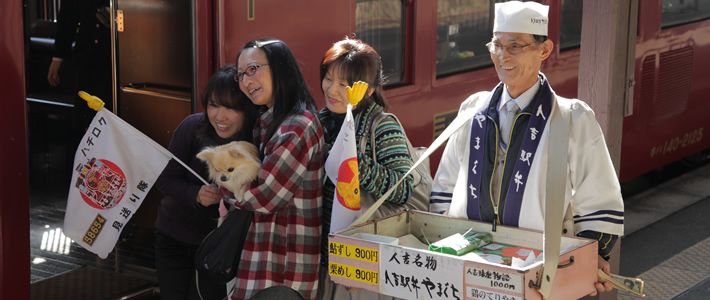
"Bentō": A Feast for the Eyes and Stomach
The Local Flavors of Popular Railway Box Meals
Culture Lifestyle- English
- 日本語
- 简体字
- 繁體字
- Français
- Español
- العربية
- Русский
Ekiben—a word combining eki (train station) and bentō (boxed meal)—bought at railway stations or on trains around Japan are packed with regional gastronomic delights like traditional local dishes or foodstuffs for which the area is famous. Travel writer Kobayashi Shinobu, who has eaten her way through 5,000 ekiben, has this to say about their appeal and secrets:
I think Japan is number one when it comes to the variety of foodstuffs. Ekiben are chock-full of these various foods from across Japan. Dishes made with 10 or more ingredients and prepared and seasoned in as many different ways are closely packed in a box small enough to fit in the hands. (Kono ekiben ga umai [My Favorite Railway Box Meals], Kadokawa Shoten Publishing)
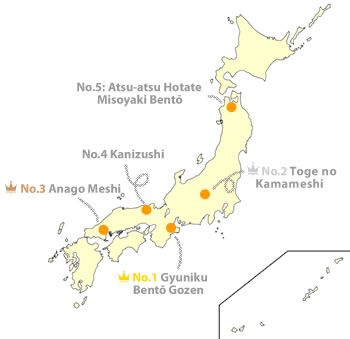
Click the map locations to jump to information on that bentō.
To the Japanese, the word ekiben is a link between geographical regions and food. In May 2011, the dining information website Gurunavi conducted a survey of the most popular railway box meals. At the top of the list were those that have been around for decades and that use ingredients widely known as specialties of each region. Many people evidently felt affection for ekiben of their local area and voted accordingly, and the most popular ones had names very true to the public impression of their locality.
The champion was Gyuniku Bentō Gozen (beef bentō tray), sold at Matsusaka Station in Mie Prefecture. The primary reason for its victory was the prestige of the Matsusaka beef brand. The beef is so famous worldwide that there are international visitors who make a point of buying this bentō on their trip to Japan.
Ekiben offer the chance to taste foods that would cost much more at restaurants, including branded beef and rare seafood, at moderate prices. This affordability and taste are a driving force behind their popularity.
We asked the producers of the five most popular ekiben what makes their box meals so popular.
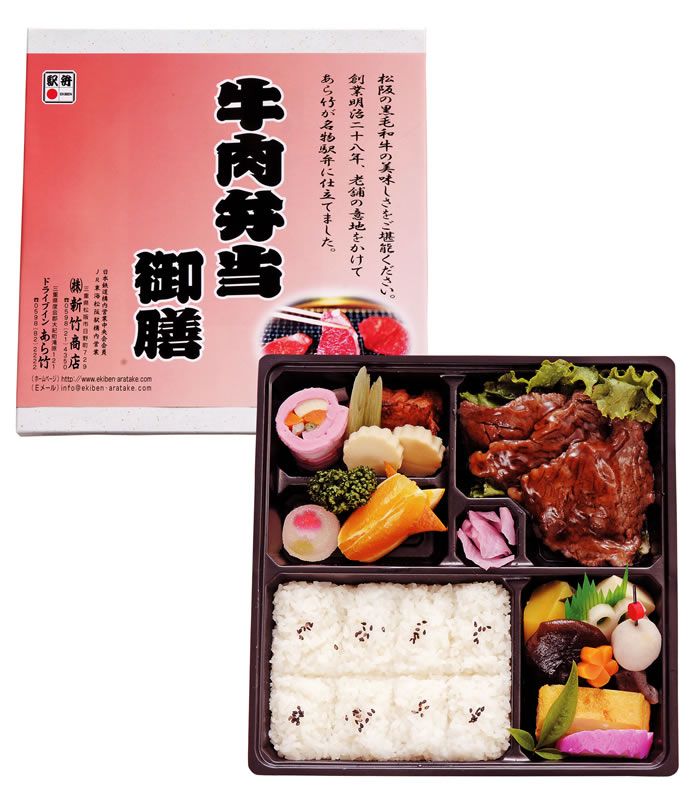
 First place: Gyuniku Bentō Gozen [beef bentō tray]
First place: Gyuniku Bentō Gozen [beef bentō tray]
(Matsusaka Station, JR Kisei Main Line and Kintetsu Yamada Line, Mie Prefecture)
No need to venture out to an expensive steakhouse or barbecue restaurant: this bentō offers a quick and affordable means of savoring the Japanese Black beef for which Matsusaka is so renowned. It also features a good balance of nonmeat dishes. Unchanged since the producer’s founding in 1895, the bentō is famous throughout Japan and even overseas. Some American tourists have come to buy the meal after hearing about it back in the United States and ekiben fans from Hong Kong place orders before their visit. (Aratake Shoten Co., Ltd.)
![Toge no Kamameshi [mountain-pass kettle rice]](/en/ncommon/contents/views/42838/42838.jpg)
 Second place: Toge no Kamameshi [mountain-pass kettle rice]
Second place: Toge no Kamameshi [mountain-pass kettle rice]
(Yokokawa Station, JR Shin’etsu Main Line, and Annaka-Haruna Station, Nagano Shinkansen, Gunma Prefecture)
Heated earthen bowls are washed in warm water, keeping the meal warm until it is time to eat. Rice cooked in a blend of kelp broth and secret ingredients is topped with a colorful assortment of foodstuffs from the mountainside, making for a flavorful meal. The Mashiko pottery container is also popular. The bentō has long-time fans for its taste, which has remained the same since its debut in 1958, and attracts younger travelers with its fame. (Oginoya)
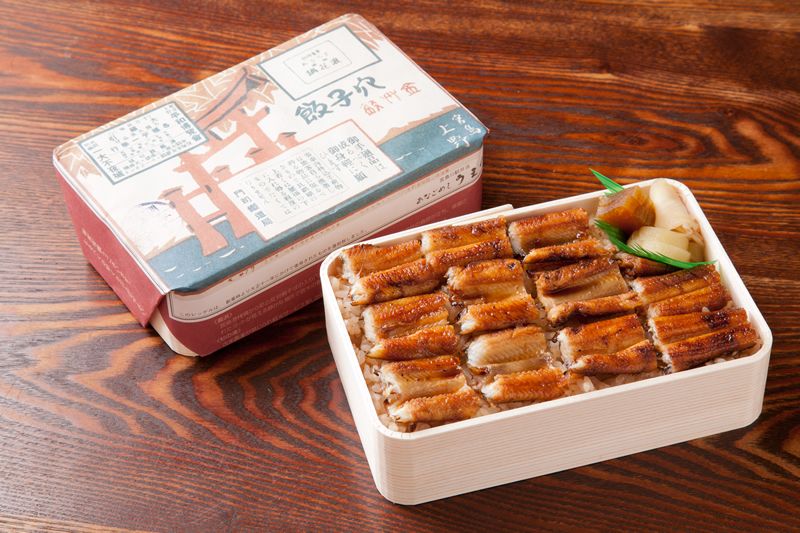
 Third place: Anago Meshi [conger eel rice]
Third place: Anago Meshi [conger eel rice]
(Miyajimaguchi Station, JR San’yō Main Line, and Hiroden Miyajimaguchi Station, Hiroshima Electric Railway, Hiroshima Prefecture)
Sold since 1901, this well-known bentō can be found at the two train stations serving as the gateway to the island of Miyajima, a World Heritage site. Inside a box made of thin sheets of wood, pieces of savory conger eel basted with a special sauce sit on top of rice cooked in eel broth. The sauce has been in continuous use since the Meiji era (1868–1912), with more of the same ingredients being added as needed. The bentō tastes even better cold. The paper covering, which comes in more than 70 designs, gives the box meal an added historical flavor and is popular with repeat customers. (Ueno Ltd.)
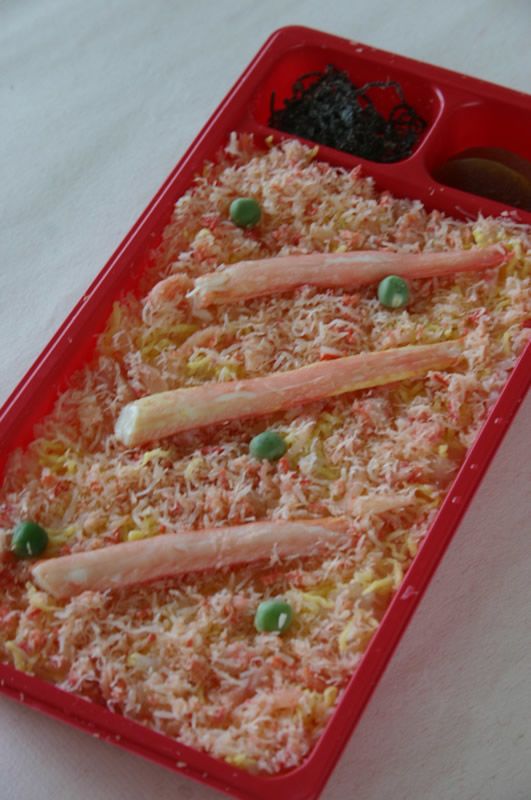 Fourth place: Kanizushi [crab sushi]
Fourth place: Kanizushi [crab sushi]
(Kinosaki Onsen and Toyooka stations, JR San’in Main Line, Hyōgo Prefecture)
This is chirashi-zushi—vinegared rice topped with an assortment of fish and other ingredients—featuring crabmeat exquisitely seasoned with sweetened vinegar. As a dish that has represented the Kinosaki hot spring resort since the Heian period (794–1185), it is a favorite purchase among visitors. (Tadegawa Inc.)
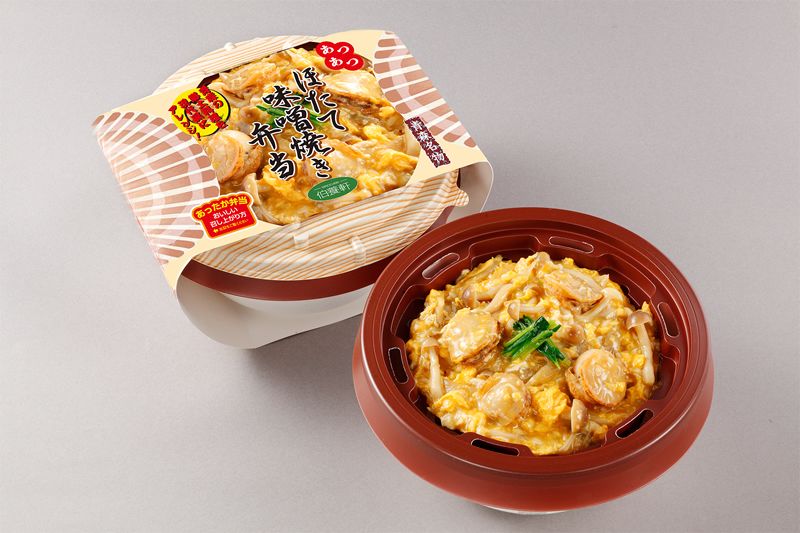 Fifth place: Atsu-atsu Hotate Misoyaki Bentō [piping hot miso-baked scallop bentō]
Fifth place: Atsu-atsu Hotate Misoyaki Bentō [piping hot miso-baked scallop bentō]
(Aomori Station, JR Ōu Main Line, and Shin-Aomori Station, Tōhoku Shinkansen, Aomori Prefecture)
Miso-baked scallop is a traditional dish of Aomori Prefecture, which boasts a thriving scallop farming industry. The scallop shell is used in place of a pot to bake the scallop in miso, after which a beaten egg is poured over and allowed to cook. In this bentō, the scallop shells are replaced by a heat-retaining container. (Aomori branch, Wellness Hakuyouken)
(Originally written in Japanese.)
Ekiben kamameshi beef eel rice Miyajima local dishes Matsusaka beef Oginoya crab sushi miso scallop Kinosaki